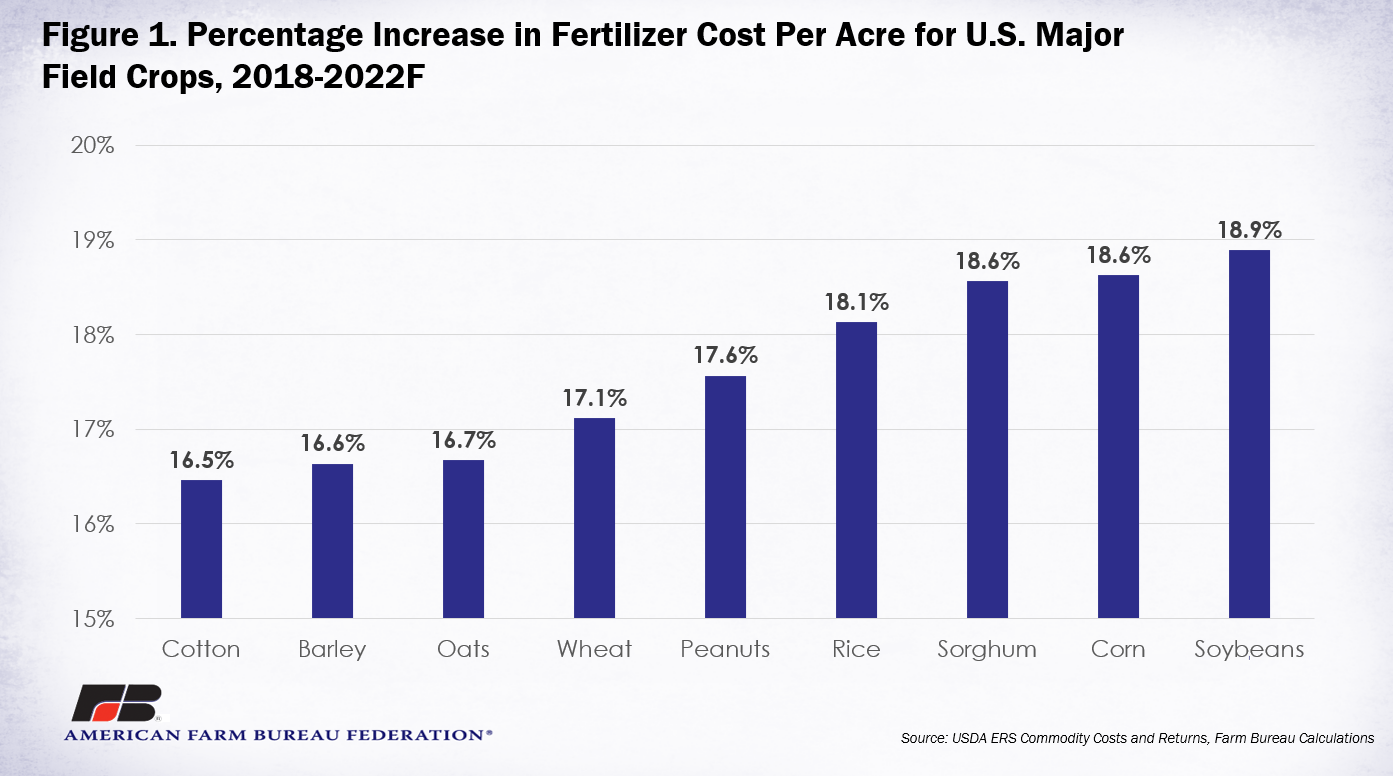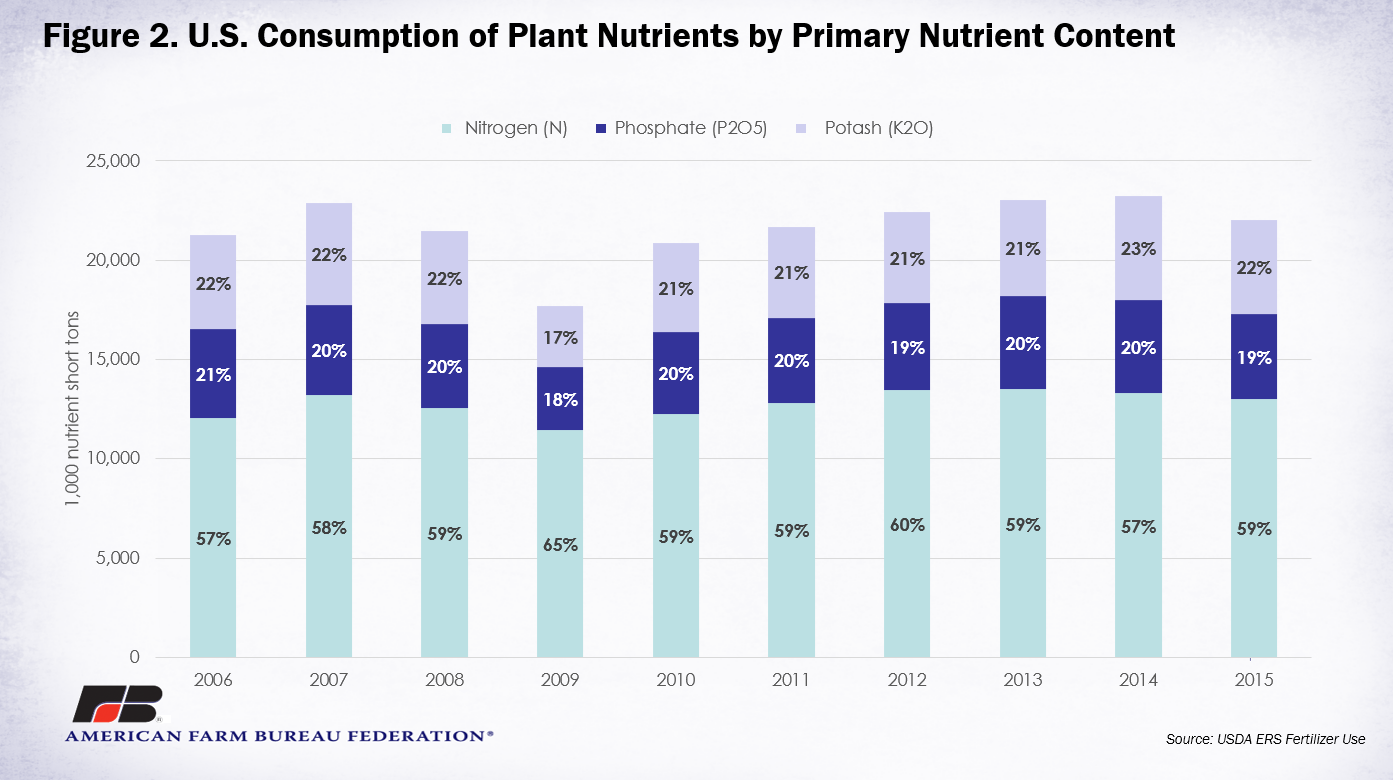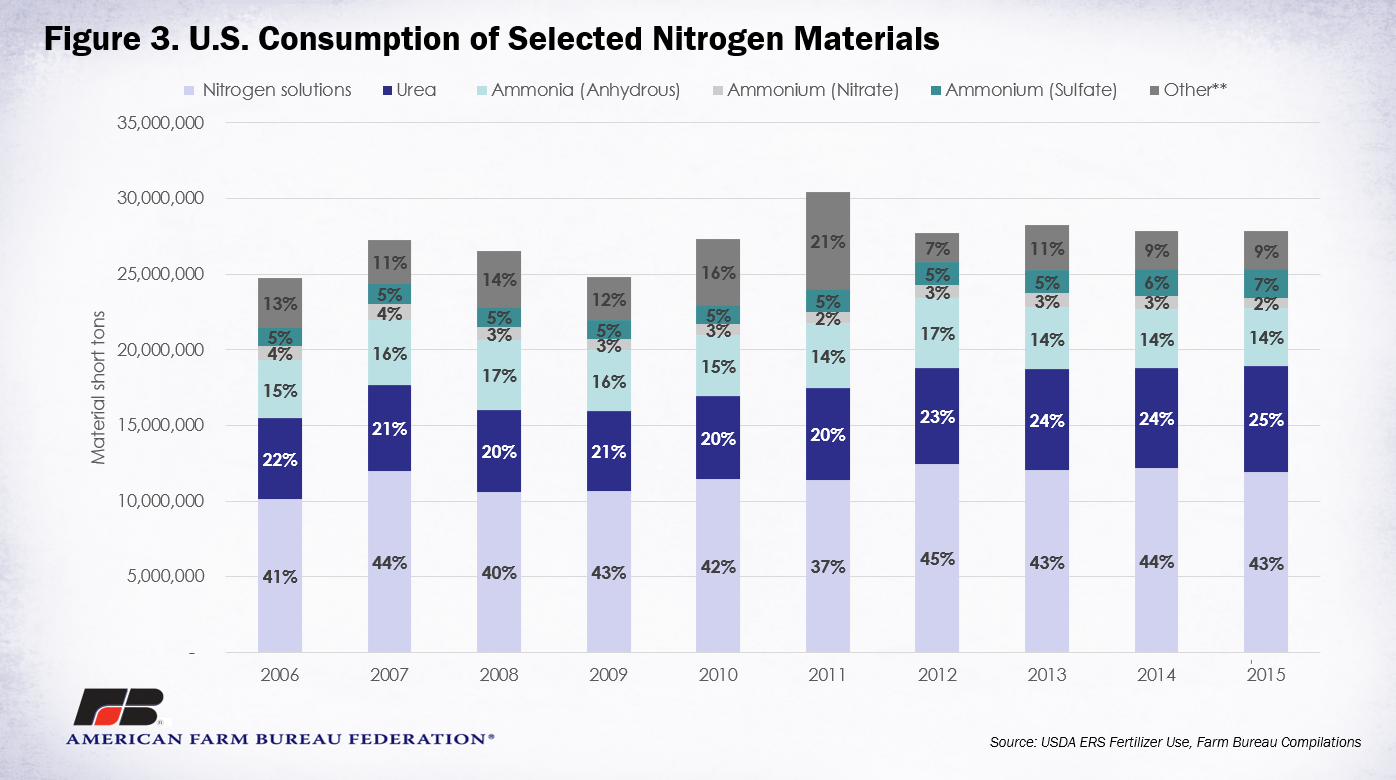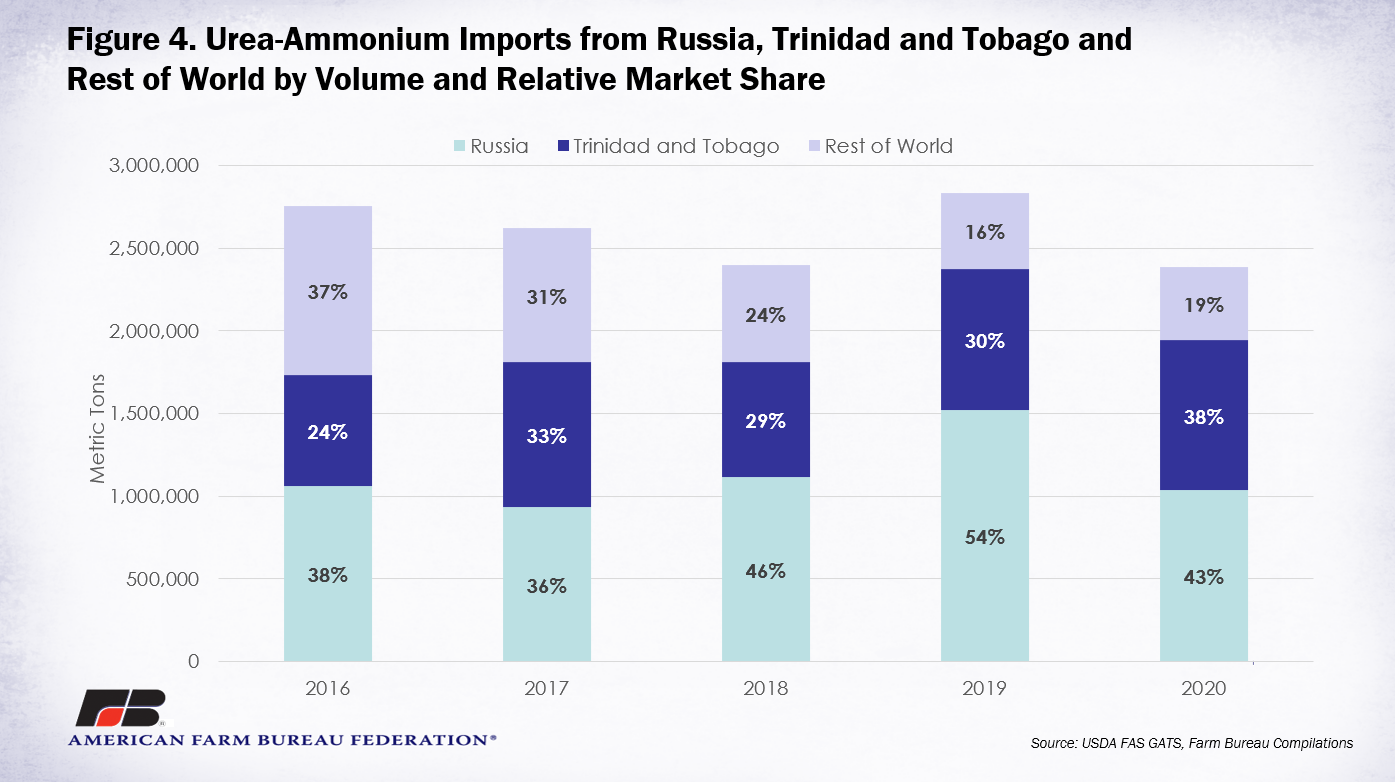Potential Countervailing and Anti-Dumping Duties on UAN Solutions Raise Eyebrows
TOPICS
UAN
photo credit: Tennessee Farm Bureau, Used with Permission
Veronica Nigh
Former AFBF Economist
As American agricultural production grows to meet new domestic and international market opportunities, inputs needed to produce those crops must grow as well. Fertilizer, a key production input, is projected to account for approximately 36% of operating costs for major field crops in the U.S. in 2022. Given that fertilizer costs are such a significant portion of production costs, farmers keep a close eye on anything that might cause fertilizer costs to increase, like the recent U.S. International Trade Commission anti-dumping and countervailing duty investigations on urea ammonium nitrate solutions from Russia and Trinidad and Tobago.
Over the last several years fertilizer prices have risen considerably for all U.S. major field crops. USDA’s Economic Research Service is already projecting that fertilizer prices will rise 5% in 2022 over 2021, and that’s before the potential tariffs on UAN are factored in. If realized, this would mean that between 2018 and 2022, fertilizer prices will have increased by double digits for every major field crop in the U.S. Over this period, fertilizer prices will have increased by 16.5% for cotton, 16.6% for barley, 16.7% for oats, 17.1% for wheat, 17.6% for peanuts, 18.1% for rice, 18.6% for sorghum and corn, and 18.9% for soybeans. Rising input costs make it difficult for farmers to remain competitive in global markets.

To get a clearer idea of how an increase in UAN solutions could impact farmers, its necessary to understand how UAN solutions fit into the larger fertilizer usage picture. Fertilizers can be broken into three buckets based on the primary nutrient content of the fertilizer. The three primary nutrients are nitrogen (N), phosphate (P2O5) and potash (K2O).
The latest data on fertilizer use from USDA-ERS tells us that farmers used a little over 22 million short tons of fertilizer on major U.S. field crops, of which 59% was nitrogen, 19% was phosphate and 22% was potash.

Today, UAN solutions are the most commonly used delivery materials for nitrogen fertilizer, accounting for 43% of nitrogen fertilizer usage. The other four primary nitrogen delivery materials are urea (25% of delivery), anhydrous ammonia (14% of delivery), ammonium sulfate (7% of delivery) and ammonium nitrate (2% of delivery).

Given that UAN solutions account for 43% of nitrogen fertilizers, and nitrogen accounts for 59% of total fertilizer use, that means about 25% of operating costs can be attributed to UAN solutions. Certainly, farmers would feel a significant increase in UAN solution costs in their bottom line.
The U.S. currently produces UAN fertilizer and imports this fertilizer from several countries, including Russia and Trinidad and Tobago. Russia and Trinidad and Tobago combined account for approximately 81% of UAN fertilizer imports. If the proposed anti-dumping margins drive UAN fertilizer costs up between 169.96% and 391.65% for Russia and 158.81% for Trinidad and Tobago, plus the countervailing duties, production costs will rise accordingly for U.S. farmers who grow corn, soybeans, cotton, wheat and other crops for the next planting season and beyond.

Conclusion
America’s farmers are increasingly concerned about their access to an affordable, competitive supply of this crucial fertilizer, which is a primary nutrient for plant growth for a broad range of crops.
Imports are an important part of the UAN supply to farmers. The application of the duties requested by the petitioner, potentially in effect for five years, with the possibility of extension, will result in a constricted supply and higher prices for farmers for years to come, which would have a major impact on planting decisions and production.
Trending Topics
VIEW ALL